India’s manufacturers cash in as brands seek refuge from US-China tensions
Indian firms are capitalising on a push by leading brands to diversify their suppliers away from China.
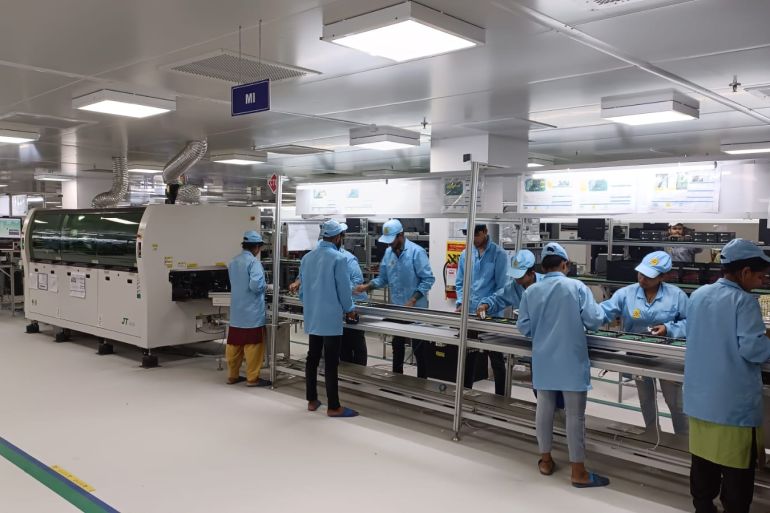
Noida, India – At an assembly plant for Motorola smartphones on the outskirts of the Indian capital, large white machines hiss and beep as they mount CPUs on motherboards, while lasers etch barcodes on each item in puffs of smoke.
On another floor, men and women dressed in identical blue checked smocks and caps stand in rows pushing speakers, microphones and cameras into the bodies of the phones.
Keep reading
list of 4 itemsUS labour market remains tight, manufacturing slows down
US job openings increase to five-month high, manufacturing slumps
Thailand’s economy slows amid declining exports, manufacturing
Barely two-and-a-half years since Dixon Technologies began assembling smartphones for Motorola, the Noida-based company is producing 500,000 units a month.
Dixon has received orders to bump that up to 600,000 next quarter and 850,000 units from January.
Also in the pipeline are plans to assemble tablets for Chinese parent firm Lenovo Group.
Dixon’s business is going so well that it is planning to expand the plant to keep up with demand.
Dixon is among the many Indian firms capitalising on Prime Minister Narendra Modi’s bid to boost manufacturing in the country as global brands look to diversify their suppliers away from China amid political uncertainty and tensions between Washington and Beijing.
“There’s a lot of tailwind for the industry with global brands looking at a China plus-1,2,3 strategy,” Saurabh Gupta, Dixon’s chief financial officer, told Al Jazeera, referring to firms’ preference to have several manufacturing bases to choose from in addition to China.
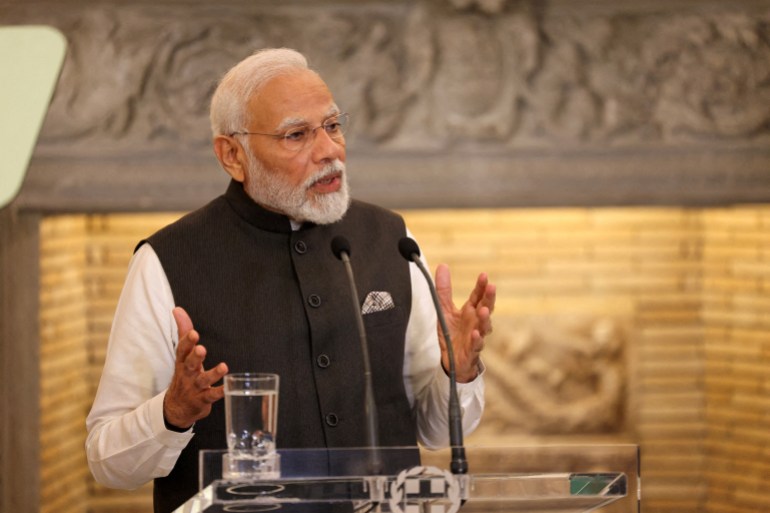
The Modi government’s manufacturing scheme, known as Production Linked Incentive (PLI), offers cash incentives to firms in a range of industries, including pharmaceuticals, textiles and electronics.
Under the scheme, qualifying companies receive cash incentives if they are able to boost their sales above the base year, every year, over a period of five years. In the mobile phone sector, the incentives range from 4 percent to 6 percent of sales and are open to five domestic and five foreign companies subject to meeting the target.
Foreign firms can only avail of the incentives for manufacturing products with a minimum factory price of $200.
India’s manufacturing sector has lagged behind that of neighbouring China, struggling to rise above 18-19 percent of gross domestic product (GDP) over the past few decades.
Successive governments have tried to jumpstart the sector with limited success, hoping to create an engine for job creation for the millions of Indians joining the workforce every year.
In 2015, the Modi government launched the “Make in India” campaign to encourage firms to manufacture and assemble products in the country.
The following year, it introduced a range of import tariffs on different mobile phone components to force electronics companies to make those products in India.
In the latest move aimed at keeping production at home, New Delhi last month announced it would restrict the import of laptops and tablets to firms with special licences.
After significant pushback, the government extended the deadline for obtaining a licence to the end of October.
Dixon, which makes home appliances, mobile phones, electronic wearables and other products, is one of the five companies in the electronics sector that have qualified for consideration for funds under the PLI scheme.
It is, however, the only Indian firm so far to actually receive money after reaching the government’s targets, raising questions about how successful the initiative will be.
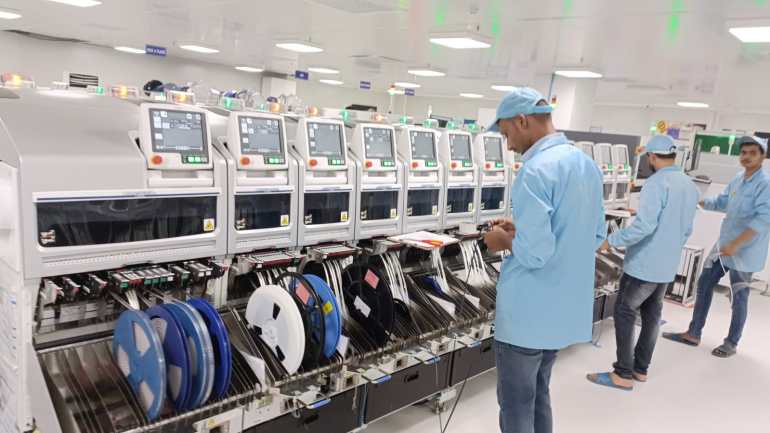
Rahul Bajoria, managing director at Barclays, said firms are unlikely to pare back their existing plants in China because the country is a huge market and important for new product launches.
But businesses will increasingly choose other countries such as India to expand their production capacity or replace existing facilities, Bajoria said.
“So it’s not a pulldown in China but a buildup in other places,” Bajoria told Al Jazeera. He said New Delhi’s strategy for boosting manufacturing had begun to produce “visible improvements”.
“This is a gradual process,” he said. “It doesn’t go from zero to 100 in a short span of time. You consistently build upon capacity.”
Trade data shows some early signs of success.
Last year, India exported smartphones, including iPhones, worth $14.8bn, a record high, compared with imports of $17.6bn.
Apple, in particular, has stepped up its presence in India since it began assembling the iPhone SE there in 2017, with about 7 percent of all iPhones now made in the country.
Last year, the California-based tech giant began assembling the iPhone 14 in India and is reportedly planning to make the iPhone 15 in the country, too.
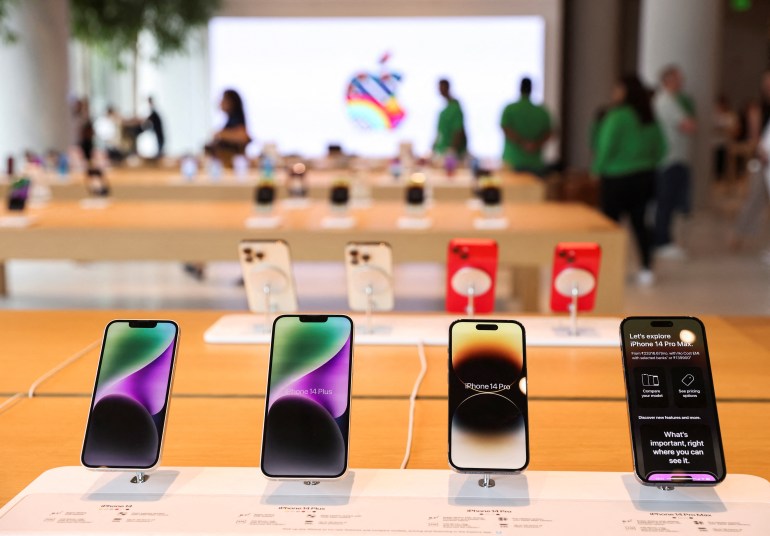
Yet, even as India tries to grow its manufacturing base, the country remains hugely dependent on imports of electronic components, predominantly from China.
In the 12 months to the end of July, India imported electronics worth $73.5bn, a figure that has risen consistently and ranks as the third-biggest import bill after oil and gems and jewellery.
“There is a creeping value add, and, over time, the expectation is that the value add will increase,” Bajoria said.
However, Sunil Sinha, principal economist at India Ratings, said the real value addition is in manufacturing, not just assembling products, “and we are still pretty far off from that”.
For that to happen, India needs to encourage small and medium businesses, the backbone of the country’s manufacturing sector, to become suppliers to large firms, Sinha told Al Jazeera.
He, however, said small and medium-sized firms are still recovering from a series of shocks, including the COVID-19 pandemic, new income tax rates, and the sudden withdrawal from circulation of the 2,000-rupee note.
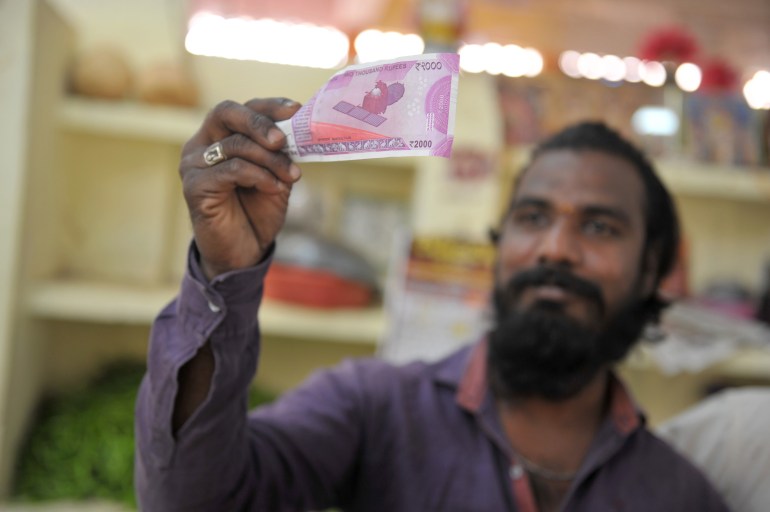
“The small businesses are still trying to find their feet after all those events. For them, it’s a case of survival rather than looking at big opportunities,” he said.
Still, Sinha is hopeful that India is on the verge of a new cycle of capital investment that could deliver a significant boost to manufacturing.
“There will be a domino effect [on the small businesses], but with a lag,” he said. “It’s possible with electronics as well. Indian [small businesses] are fairly malleable to the changing circumstances. They have the resilience but need demand and support structure to kick in.”